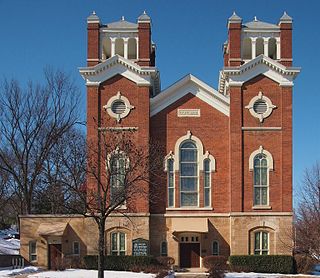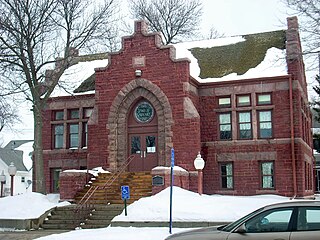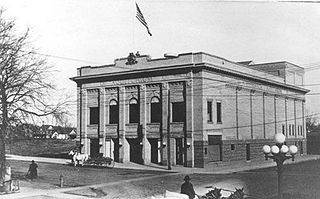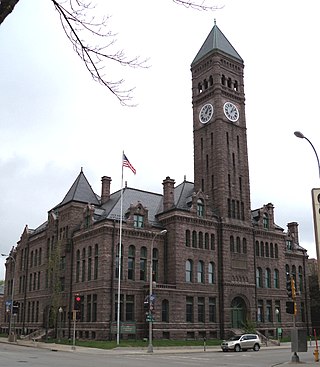
William LaBarthe Steele was an American architect from Chicago, Illinois. He is considered a principal member of the Prairie School Architectural Movement during the early 20th century.

The Federal Building and U.S. Courthouse, also known as U.S. Courthouse, Sioux Falls, is a historic federal office and courthouse building located at Sioux Falls in Minnehaha County, South Dakota. The building is still in use as a federal courthouse, being the seat of the United States District Court for the District of South Dakota. The structure is listed on the National Register of Historic Places.

Frank L. Packard was a prominent architect in Ohio. Many of his works were under the firm Yost & Packard, a company co-owned by Joseph W. Yost.

Proudfoot & Bird was an American architectural firm that designed many buildings throughout the Midwest region of the United States. Originally established in 1882, it remains active through its several successors, and since 2017 has been known as BBS Architects | Engineers.

Charles N. Daniels (1828-1892) was an American architect active in Minnesota, North Dakota, and Washington.

Hugill & Blatherwick was an architectural firm in Sioux Falls, South Dakota that was founded by George C. Hugill and Wilfred F. Blatherwick circa 1921. A number of their works are listed on the U.S. National Register of Historic Places.

Keene & Simpson was an American architectural firm based in Kansas City, Missouri, and in practice from 1909 until 1980. The named partners were architects Arthur Samuel Keene FAIA (1875–1966) and Leslie Butler Simpson AIA (1885–1961). In 1955 it became Keene & Simpson & Murphy with the addition of John Thomas Murphy FAIA (1913–1999), who managed the firm until his retirement in 1980.

Perkins & McWayne was an architectural partnership of Robert Perkins and Albert McWayne.

Joseph Schwartz, known also as Josef Schwartz, was a notable architect of Sioux Falls, South Dakota.

Arthur Wesley Van Horn was a prolific architect of Bismarck, North Dakota. A number of Van Horn's works, alone or as part of his firm, are listed on the U.S. National Register of Historic Places.

Lewis F. Goodrich (1848-1929), frequently known as L. F. Goodrich, was an American architect based in Augusta, Georgia. He designed public buildings in Georgia and South Carolina.

The Old Minnehaha County Courthouse, located at Main Avenue and 6th Street in Sioux Falls, is the former county courthouse of Minnehaha County, South Dakota.

Edward Dow was an American architect from New Hampshire.

George G. Adams was an American architect from Lawrence, Massachusetts.

Beuttler & Arnold was an architectural firm in Sioux City, Iowa that designed several works that are listed on the National Register of Historic Places for their architecture.

John P. Eisentraut (1870-1958) was an American architect most closely associated with South Dakota. Eisentraut designed a number of buildings, including Carnegie libraries and courthouses, several of which are listed on the National Register of Historic Places. He was one of South Dakota's leading architects during the first quarter of the twentieth century.
Kings & Dixon was an architectural firm based in Mitchell, South Dakota. A number of its works are listed on the National Register of Historic Places.

Old Main, originally known as University Hall and Main Hall, is a historic university building at the University of South Dakota. Originally built in 1883, it is the oldest building on campus, despite having been rebuilt after an 1893 fire. It has been listed on the National Register of Historic Places since 1973.

Robert A. Ritterbush FAIA (1891–1980) was an American architect in practice in Bismarck, North Dakota, from 1920 until 1967.

Truman I. Lacey (1834–1914) was an American architect in practice in Binghamton, New York from 1872 until 1914.




























